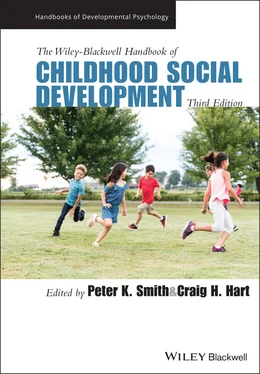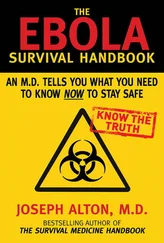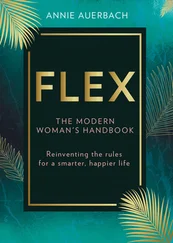A child is regularly engaged in reciprocal interactions with others in their immediate environment, both in terms of small everyday encounters and larger, unusual, or dramatic events (Meadows, 2018). These bi‐directional interactions within the microsystem are termed “ proximal processes ” (Bronfenbrenner & Morris, 2006). Depending on the level of exposure (such as the timing, duration, frequency, and intensity of experiences), proximal processes have a powerful impact on developmental outcomes (Bronfenbrenner & Evans, 2000).
At the next layer, the mesosystemrepresents the relationships between microsystems in the child’s environment. An example is the home–school relationship, where the quality of the relationship between children’s caregivers and school (for example, involvement in school activities, communication with teachers) will impact on the child’s ongoing development. Similarly, if a child’s peer group is known and liked by their family it will have a differential impact to circumstances where a child’s family does not know their friends or does not approve of them.
At the next layer of the ecological system is the exosystem. These are settings which interact and influence each other, but which may not directly involve the individual child. For example, a child is not part of their parent’s employment, but what happens in their workplace will have a knock‐on effect on a child’s home life. A parent who comes home stressed, works long hours or is in precarious employment will have a different impact on the child compared to a parent in secure stable well‐paid work who enjoys their job. Additionally, the child themselves will indirectly impact on a parent’s employment through, for example work–life balance and childcare arrangements.
The outer layer of the ecological system is the macrosystem.This is the largest system, yet most distant from the day‐to‐day experience of the child. This system consists of societal factors such as cultural beliefs, laws, and politics. For example, the political system will impact on educational policy and procedures in school, the economic climate will influence access to resources and the job market, and cultural ideologies around religion, gender, and sexuality will indirectly influence the child via the context in which they are raised. These high‐level aspects have a “trickle down” effect on other elements of the ecological system which ultimately shapes the day‐to‐day experience of the child.
As his theory developed, Bronfenbrenner added the chronosystem. The chronosystem represents the influence of time in development, and how it is characterized by continuity and change in people’s lives at three levels: microtime (continuity and discontinuity in proximal processes); mesotime (the frequency and duration of experiences); and macrotime (changing societal expectations and events within and across generations) (Bronfenbrenner & Morris, 2006).
The ongoing interplay between someone’s personal characteristics and the social context that affects developmental processes over time is summarized as Person‐Process‐Context‐Time (PPCT) (Bronfenbrenner, 1995). “Person” refers to the child’s characteristics (i.e., their developmentally instigative characteristics); “Process” is the mechanism for development (i.e., through proximal processes); “Context” is the multiple systems within which a child interacts (i.e., microsystem, mesosystem, exosystem, macrosystem, and chronosystem); and “Time” is the dynamic nature of development (i.e., the time, place, and historical context in which proximal processes occur). The four elements of the system (process, person, context, time) have a simultaneous influence on development.
Elder’s life‐course theory
Elder’s life‐course theory considers historical context and social timing within developmental trajectories. It shares complementary features with ecological perspectives, and both Elder and Bronfenbrenner referred to each other’s work to inform their own theories (Elder, 1995, 1998).
According to Elder, many things about how people live their lives remain the same, but there are also changes that occur across the life course and across history. The world is dynamic, which has an impact on people and their developmental trajectories (Elder, 1995). There are four principles underpinning his theory (Elder, 1998). The first is historical time and place, whereby an individual is shaped by the historical time they live through. Societal changes such as industrial growth, changing political regimes, wars and conflicts all impact on the everyday lives, experiences, prospects, and outcomes for people living through those periods. The second is about timing in lives, because when events occur in someone’s life affects their developmental impact. For example, the death of a parent in childhood will impact differently on someone’s life compared to losing a parent in adulthood. The third principle, “linked lives,” is about how experiences of individuals impact on others through social ties and personal networks. For example, marital breakdown will impact on a couple, their children, extended family members, and friends. The fourth principle is human agency, whereby individuals construct their lives and make choices within their life circumstances and available opportunities. For example, someone might choose to go to university, but this decision is made in the context of family, social, educational, and financial circumstances.
These principles were explicated through Elder’s classic three‐generational study into children who lived through the Great Depression in the 1930s (Elder, 1974). It showed how the trajectories and consequences for individuals varied depending on the age and stage of their lives when the economic slump occurred, and other factors such as their gender, socioeconomic status, neighborhood, and family situation. The ripple effects from events occurring at the macro level (in this case, economic decline) impacted differentially but significantly on parental work stability, marital relations, and subsequently children’s family life, behavior, well‐being, and education. This can help us to understand how developmental processes occur through the lifespan, how the timing of experiences within a person’s life can affect outcomes, and how historical events can have markedly different effects on development across population cohorts. Children live in “changing ecologies” (Elder, 1998, p. 7), and historical change at the macro level eventually transforms the development of individuals through changing primary relationships within the family and peer group (Elder, 1995).
Core features of ecological perspectives
From these theories, we see that the fundamental premise of ecological perspectives applied to human development is how an individual both influences and is influenced by interactions with their environment. The development of individuals does not occur in isolation. Their interactions with the environment are reciprocal, and they are part of a complex network of relationships and systems.
There are several other core features of ecological perspectives on development. One is the role of context . The environment, or ecology, in which an individual is situated shapes their development. The context can be represented as different layers or systems based on what and who an individual interacts with, within their immediate environment, and which structures have more remote influences. Development is contextual because of the complex interaction between personal characteristics and environmental factors.
A second common feature is the emphasis on process . Development is seen as ongoing, fluid, and longitudinal, rather than static and with a definable end point. Because of this we see attention to the progressive nature of development across the lifespan rather than just in childhood. The individual is also active in their own development. They perceive, explore, interpret, and interact with their environment rather than passively spectating or responding to stimuli. There is however consideration of how the actions of individuals operate within certain external constraints. The contexts within which people are situated (such as schools, families, churches) are cultivated through collective action for a shared purpose over time, and therefore have established norms, expectations, and practices, often tacit, which regulate behavior and frame interactions. Individual agency is, therefore, “socially regulated” within available options, possibilities, or affordances of the environment (Barker, 1968).
Читать дальше












